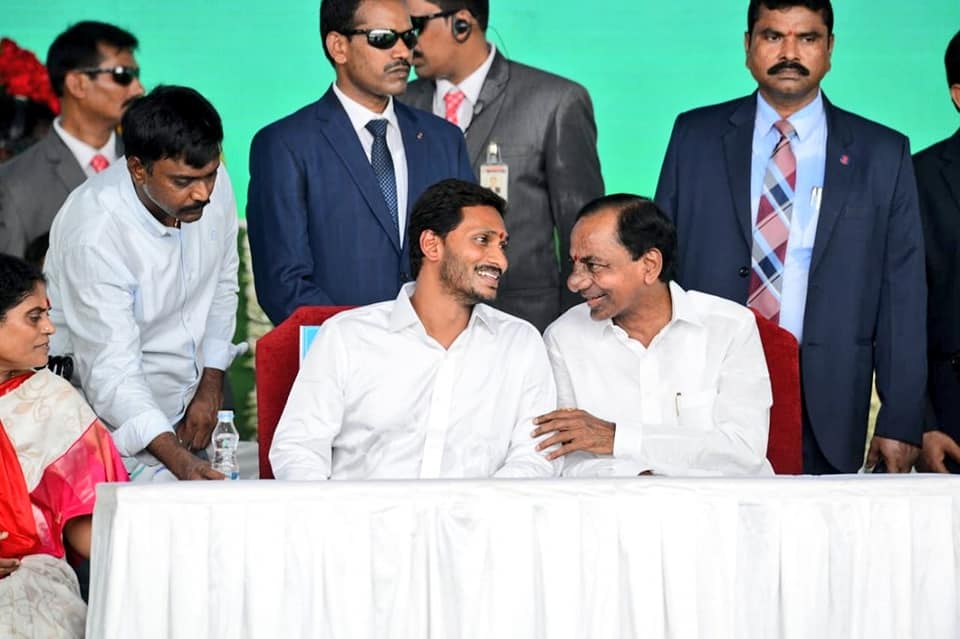
Why Telugu states are rooting for delimitation of constituencies
As the Narendra Modi government faces criticism over its move to go for delimitation of constituencies in Jammu and Kashmir following its re-organisation, it is finding support for the cause in Andhra Pradesh and Telangana, albeit for the two Telugu states.

As the Narendra Modi government faces criticism over its move to go for delimitation of constituencies in Jammu and Kashmir following its re-organisation, it is finding support for the cause in Andhra Pradesh and Telangana, albeit for the two Telugu states.
The number of Assembly seats going up following the delimitation exercise is a prospect that is seen as politically beneficial, not just for the ruling parties — Telangana Rashtra Samithi (TRS) in Telangana and YSR Congress Party in Andhra Pradesh — but also for the BJP which is keen to make inroads into the key southern states.
Moreover, delimitation was promised at the time of bifurcation of Andhra Pradesh in 2014 so that the Assemblies in the two sibling states will have more seats. As per the AP Reorganisation Act, 2014, the Assembly seats have to be increased from 175 to 225 in AP and from 119 to 153 in Telangana.
Unanimous stand
Cutting across political lines, parties in the Telugu states have shown favour in taking up the delimitation exercise at the earliest. The TRS, which spearheaded the statehood movement and later won the public mandate for two terms in a row, has been particularly vociferous in demanding that the Centre should take up delimitation in Telangana as promised in the bifurcation act.
The ruling party feels that it can accommodate more leaders, including new entrants, if the number of constituencies is increased.
Also read: Politics of vengeance throws a spanner in Andhra’s mega projects
“This (delimitation) was promised when Telangana state was created (in 2014). The Centre has been dragging its feet on this matter. It should be done as early as possible,” a veteran TRS leader and former MP B Vinod Kumar told The Federal.
There is an expectation in the ruling party circles that since the Centre has initiated the process in Jammu and Kashmir, a similar exercise in Telangana would be taken up next.
The Election Commission of India (ECI) had earlier this week held its first internal meeting in Delhi on the delimitation of Assembly segments in J&K. The Union government is expected to constitute the Delimitation Commission soon for the purpose.
BJP set to gain
The delimitation process is likely to be hastened since the BJP is keen on the rejig of constituencies in the two states. “With more Assembly seats in the state, we will certainly succeed in expanding our reach,” the BJP MLC and president of the party’s Hyderabad unit Ramachandra Rao said.
In the recent Lok Sabha elections, it made significant gains in Telangana, wresting three seats — Adilabad, Nizamabad and Karimnagar — from the TRS and retaining Secunderabad. However, in AP, it drew a blank both in the Assembly and Lok Sabha.
For the saffron party too, the delimitation would help accommodate defectors from other parties and field them in the next elections.
Also read: Naidu proposes, Jagan disposes: How Amaravati landed in hot water
The combined Andhra Pradesh had 294 assembly constituencies. When Telangana was carved out of it in 2014, these 294 were divided between the two states, with AP getting 175 seats and Telangana the remaining 119.
The proposed increase in the strength was calculated at the time of the state bifurcation and mentioned in Section 26 of the AP Reorganisation Act. According to the Act, “delimitation of the constituencies may be determined by the Election Commission” based on this formula.
However, the move will not impact the number of Lok Sabha seats in the two states — 17 in Telangana and 25 in AP.
According to official sources, the revised Census of 2011, which was published in 2013, would now be considered to add to the list of reserved seats in the two states.
Under Article 82 of the Constitution, the Parliament enacts a Delimitation Act after every census. Once the act comes into force, the Central government constitutes a Delimitation Commission which will demarcate the boundaries of the constituencies. The last Delimitation Commission was setup in 2002.
Also read: Why KCR helped Modi govt pass contentious bills in Parliament
The fresh delimitation in the two Telugu states has to be made again on the basis of the 2011 census.for delimitation of constituencies

